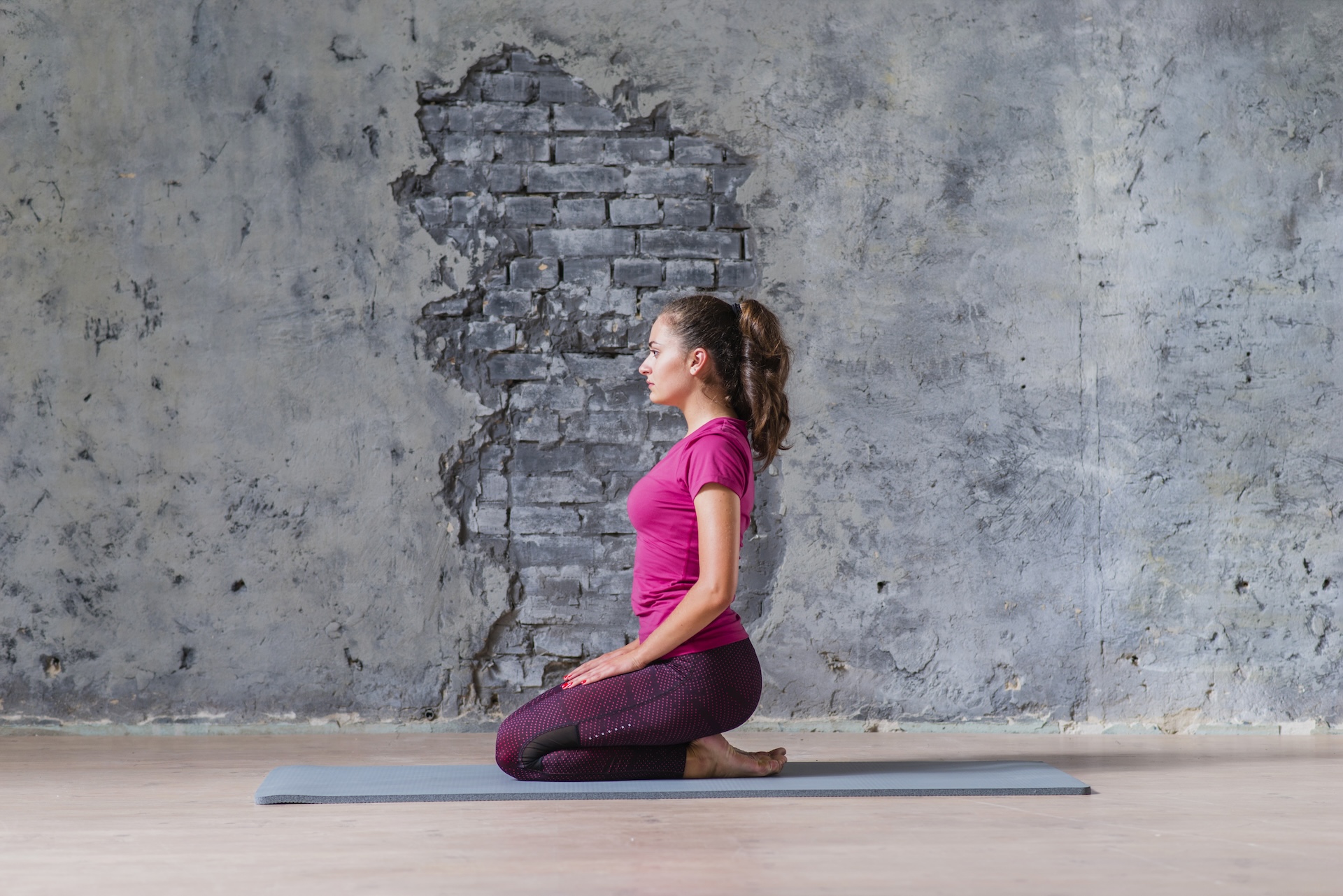Yoga enthusiasts worldwide are familiar with the transformative power of Vajrasana. Also known as Vajrasana yoga, this ancient posture holds numerous benefits for practitioners of all levels. In this comprehensive guide, we will delve into the depths of Vajrasana, exploring its benefits, precautions, and frequently asked questions, and concluding with insights into its significance in daily practice.
Vajrasana, derived from the Sanskrit words “Vajra” meaning thunderbolt or diamond, and “Asana” meaning posture, is a cornerstone of yoga practice. With its simple yet profound steps, Vajrasana offers a gateway to physical, mental, and spiritual well-being. Let’s uncover the benefits of sitting in Vajrasana and the steps to achieve this posture with precision and ease.
What is Vajrasana?

Vajrasana, also known as the Thunderbolt Pose or Diamond Pose, is a seated yoga posture that involves sitting back on the heels with the knees bent and the big toes touching. The spine remains erect, and the hands rest on the thighs or knees.
This asana is commonly practised during meditation, pranayama (breath control), and as a preparatory pose for other yoga exercises.
Benefits of Vajrasana
1. Digestive Health: Vajrasana stimulates the digestive organs, including the stomach, intestines, and pancreas, thereby improving digestion and relieving digestive issues such as indigestion, bloating, and acidity.
2. Strengthening the Pelvic Muscles: By engaging the pelvic floor muscles, Vajrasana helps strengthen the muscles of the pelvic region, promoting urinary and reproductive health.
3. Posture Improvement: Practicing Vajrasana regularly helps in correcting posture by aligning the spine and improving overall posture awareness.
4. Concentration and Meditation: The groundedness and stability achieved in Vajrasana facilitate concentration and meditation, promoting mental clarity and inner peace.
5. Relieves Knee and Back Pain: Vajrasana stretches and strengthens the muscles around the knees and lower back, alleviating pain and discomfort in these areas.
6. Weight Loss: Regular practice of Vajrasana can aid in weight management by boosting metabolism and promoting healthy digestion.
Donec ornare, est sed tincidunt placerat, sem mi suscipit mi, at varius enim Mauris ienim id purus ort.
Precautions for Practicing Vajrasana
While Vajrasana offers numerous benefits, it may not be suitable for everyone. Here are some precautions to consider before practicing this asana:
1. Avoid practising Vajrasana immediately after meals, as it may interfere with digestion and cause discomfort.
2. Individuals with knee or ankle injuries should practice Vajrasana with caution or seek guidance from a qualified yoga instructor.
3. Pregnant women should avoid practicing Vajrasana during the later stages of pregnancy, especially if they experience discomfort or strain.
4. If you have any existing medical conditions or concerns, it is advisable to consult a healthcare professional before incorporating Vajrasana into your yoga practice.
FAQs
How long should I hold Vajrasana?
Beginners can start by holding Vajrasana for 1-2 minutes and gradually increase the duration as they build strength and endurance. Advanced practitioners may hold the pose for 5-10 minutes or longer.
Can Vajrasana help with acidity and digestion issues?
Yes, Vajrasana is beneficial for improving digestion and relieving acidity. Practicing this asana after meals can aid in digestion by stimulating the digestive organs.
Is Vajrasana suitable for meditation?
Yes, Vajrasana is commonly used as a meditation posture due to its stability and grounding effect. It helps in maintaining an upright posture, which is essential for prolonged meditation sessions.
Can Vajrasana be practiced by individuals with knee pain?
While Vajrasana can help relieve knee pain in some cases, individuals with severe knee pain or injuries should practice this asana with caution or seek guidance from a healthcare professional.
In conclusion, Vajrasana is a simple yet powerful yoga asana with a myriad of benefits for the body, mind, and spirit. From improving digestion and posture to promoting concentration and meditation, this seated pose offers a holistic approach to health and well-being.
However, it is essential to practice Vajrasana mindfully and with awareness, taking into account individual limitations and precautions. By incorporating Vajrasana into your daily yoga practice, you can harness its transformative potential and experience a profound sense of balance, harmony, and vitality in your life.


